
This time my goal was Jakkoin, a small temple to the west of Ohara that features prominently in the last part of The Tale of the Heike.
As I mentioned about my hike, if you do go to Ohara, go early in the morning. The farms are lovelier and the people seem more receptive. Everyone is up working in the morning.

The picture above is looking back down the valley to Kyoto and the mountains rising to the left are the ones I hiked last week.

Many houses in the mountains north of Kyoto tend to have this type of roof as they get heavy snows in the winter. Ohara still has lots of terraced agriculture. As lovely as I may claim it to be, it tends to stink like a farm. This is just a big square of fetid sludge.
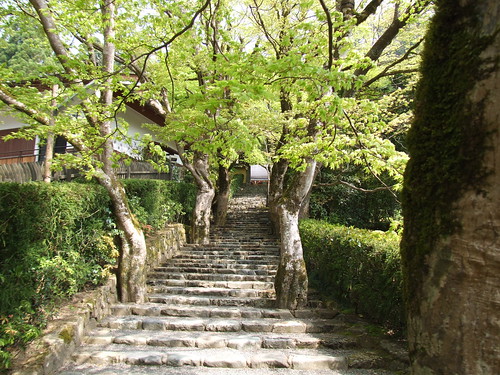
Jakkoin itself is actually a Buddhist nunnery built in the 594 by Prince Shotoku. It is a small complex but, as you can see, incredibly beautiful. This is the main entrance way.

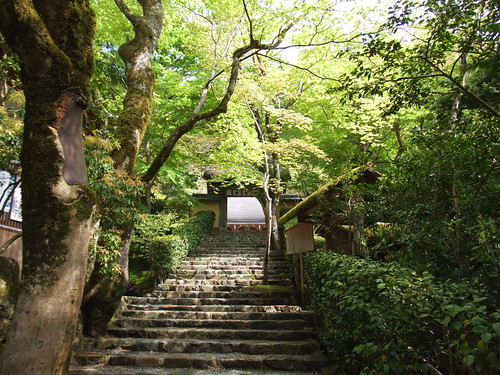
The main hall was burnt down by an arsonist in 1999. Some people are ridiculous. I had to wait to get this picture as an old man was posing in front of the gate and making his wife get shots of him in various configurations. He never offered to take her photo. Some people are ridiculous.
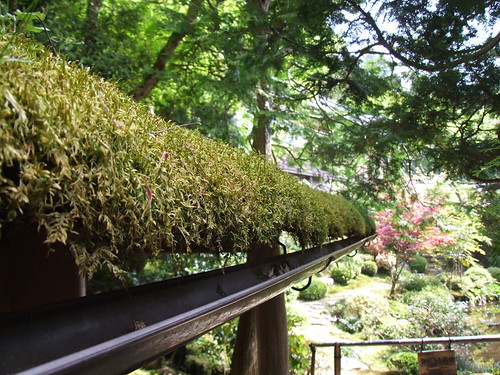


Before the gate, just off the stone stairwell is a garden that has been in the same location for a thousand years. Marinate on that for a second. I don't know how many other people that day knew of its significance. This is where, according to The Tale of the Heike, emperor Go-Shirakawa sat and waited for Kenreimon'in and composed the following poem:
The cherry tree leans
Over the quiet depths
Of the pool
While fallen petals float
On the silent ripples
This is supposed to echo the Heike defeat at Dan no Ura and the bodies lost at sea, which included Kenreimon's son who was drowned in the arms of his grandmother. There is a little wooden structure and a bench next to the garden. I sat there and no one else came, although I could here some mounting the steps. Unfortunately a monk was running a leaf blower somewhere behind the bamboo. You would think a temple could use brooms or rakes. It dampened the scene.
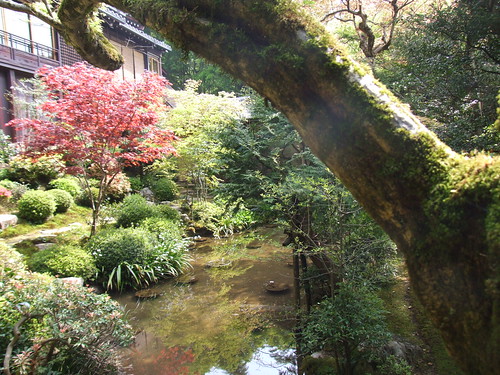
Nevertheless, this is that pool and the cherry tree's descendant remains.


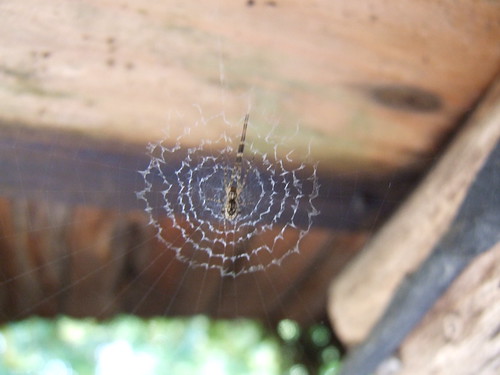
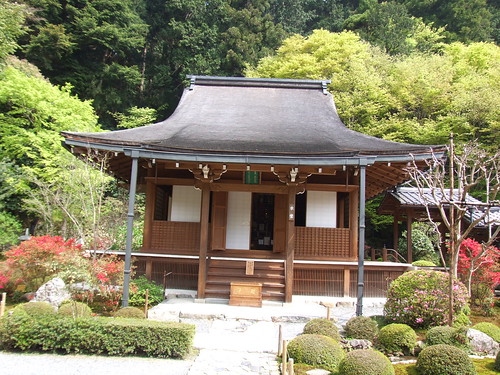
That is the reconstructed main hall. It is alright. The grounds are strikingly self contained. I mean small. I was yelled at in bad English by a priest for stepping on a board in my shoes when no sign was written anywhere. I responded, "You can say it in Japanese." As I really wasn't sure what he was getting at at first. That and the leaf blower darkened my mood slightly.
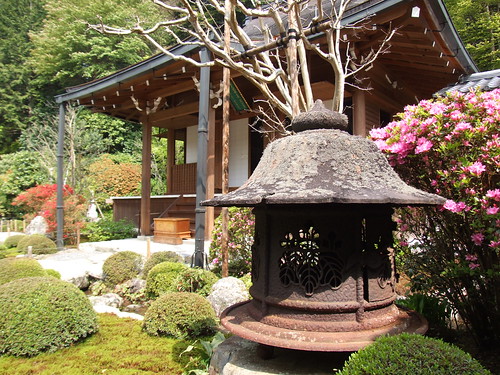
This bell was a gift from Toyotomi Hideyoshi.
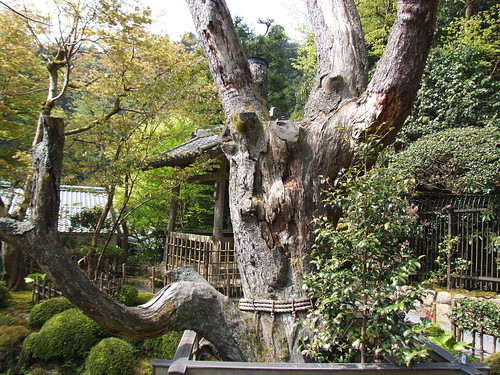
This is the pine tree that was mentioned in The Tale of the Heike. It was badly damaged in the fire and later died. What a terrible waste. It is almost a supernatural belief to think that because the tree was alive and was also alive when famous events a thousand years ago took place that it being there provides you with any kind of connection to the age. Still.
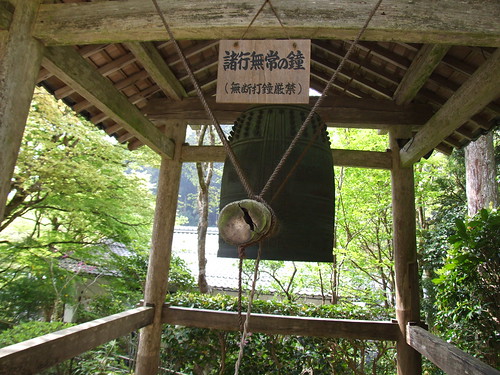
The bell that rings at the end of The Tale of the Heike was the bell of the Jakkoin.
The burned remnants of the Buddha from inside the old hall were on special display for 300 yen in a separate building. The remains were far more striking than any new statue. Photography was prohibited but the same old man manged to snap a shot while his wife was telling him, "The sign outside says 'no photography.'" Those rule breaking foreigners...Wait a second. I didn't take a picture, but it was a very touching display. Probably the most striking Buddha image I have seen. And living in Kyoto, I have seen my share.

Ohara is known for its flowers. Look, some tulips.
1 comment:
he has a good point gucci replica check my site replica bags online find replica bags china
Post a Comment